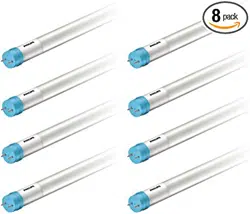
EyeComfort white paper
1
No
wadays, light quality is a key differentiator in lighting. In general, quality of light refers to the visual
aspects of light and its dependencies on and interaction with people and the environment. LEDification
gives us endless possibilities to differentiate in spatial, spectral, and temporal light quality. It forces us to
revise our traditional way of evaluating light quality. Signify continuously optimizes its products by
bringing together in-depth understanding of user needs, lighting application knowledge, and scientific
insights. Signify, the global leader in lighting, brings its LED lamps and LED luminaires to the market
under the well-known Philips brand.
Sig
nify has created the EyeComfort trademark based on the following selected criteria: Flicker,
Stroboscopic effect, Photobiological safety, Glare, Dimming, Tunable, Color rendering, and Audible
noise.
Ou
r LED lamps and LED luminaires product portfolio is evaluated using these criteria. This white paper
explains these criteria and, accordingly the importance of optimizing lighting.
Scientific Background
Philips branded EyeComfort LED of Signify incorporates the above-mentioned criteria:
1. Flicker and Stroboscopic effect
Flicker and Stroboscopic effect are Temporal Light Artifacts (“TLAs”). TLAs are defined as change in visual
perception, induced by a light stimulus, the luminance or spectral distribution, which fluctuates with
time for a human observer in a specified environment. Flicker is the perception of visual unsteadiness
induced by a light stimulus, the luminance or spectral distribution, which fluctuates with time, for a
static observer in a static environment. In other words, it is a disturbing rapid fluctuation of the light in
the room.
The st
roboscopic effect is different than flicker and is defined as the change in motion perception,
induced by a light stimulus, the luminance or spectral distribution, which fluctuates with time, for a
static observer in a non-static environment. In other words, the stroboscopic effect results in an
unnatural break-up of a continuous motion.
A
property of LEDs is the rapid response to variations in the input signal. Therefore, they faithfully
reproduce those fluctuations in the light output, potentially leading to TLAs for individuals in the lit
space. The fluctuations may come from various sources, including: disturbances on the mains,
interactions with controls (e.g. dimmers), disturbance on the input signal from external sources (e.g.
microwave), and designed-in fluctuations from the electronic driver. Methods to suppress fluctuations
in the light output of LEDs and, at the same time, lower the visibility of unwanted TLAs are known. These
methods, however, require compromise on cost and efficiency and require more physical space, while
lowering the lifetime of LED products with any architecture.
1
EyeComfort white paper may be amended by Signify as (additional) information becomes available to us
in
various areas, including Product Development, Research, Standards & Regulations.
Loading ...
Loading ...
Loading ...
